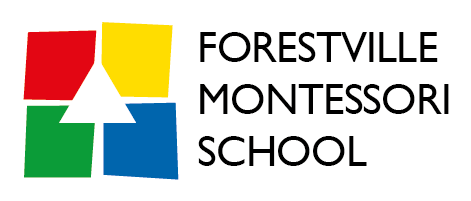Tell Me A Story
Storytelling, creativity and allowing the imagination to take flight.
How does this happen in this classroom?
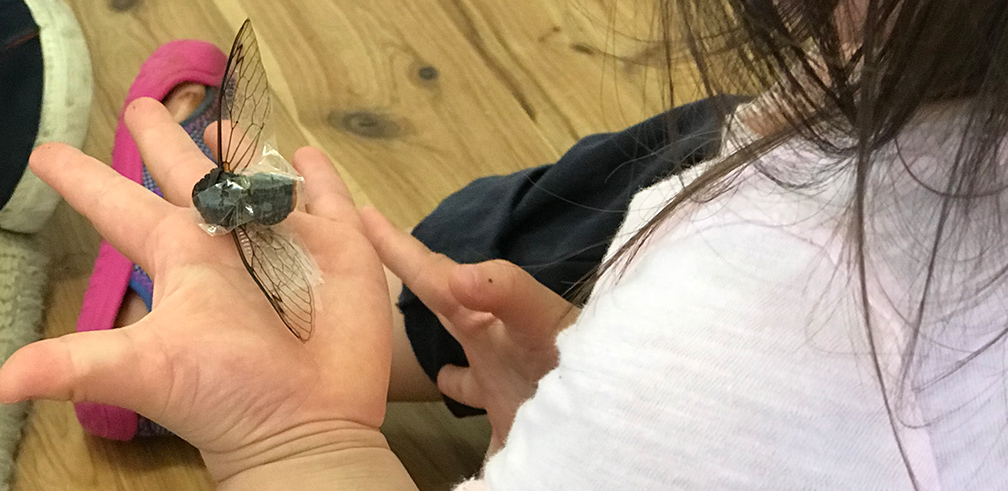
Natasha Williams, Director 3-6 Environment
Written by Mag O’Hearn
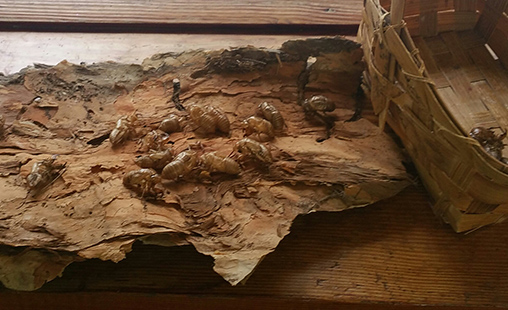 The striking song of the cicada first attracted the children within the 3-6 environment this term. ‘What is that?” a three year old asked, whereby a 5 year old
replied “Oh I know, that’s a cicada”.
The striking song of the cicada first attracted the children within the 3-6 environment this term. ‘What is that?” a three year old asked, whereby a 5 year old
replied “Oh I know, that’s a cicada”.
At playtime, squeals of excitement and gasps of wonder resonated around the playground as cicada shells were discovered. A basket was found and into the classroom came a pile of these empty shells! A maths lesson took place as 3, 4 and 5 years olds counted out how many shells had been collected. “47 cicadas, wow!” exclaimed a 4½ year old. Encouraged by the Directress, sandpaper numbers were brought to the mat and together as a group, the number 47 was made with the cards.
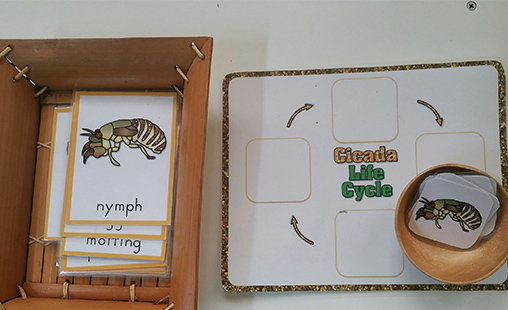 The continuation
of wonder, awe and excitement encouraged the adults in the room to make language cards for the children of ‘eggs, nymph, moulting,
and cicada. Images of Green grocers, Black Prince and Double Drummer Cicadas were added, to build the children’s understanding
of the life cycle and vocabulary. A captivating YouTube video was watched, “Amazing Cicada Life Cycle” by Sir David Attenborough,
where the children discovered that cicadas lived underground for “17 years”. They could visualise how they evolved through the
moulting process, and how the male made that deafening sound to attract the female, and the female made a clicking sound to attract
the male.
The continuation
of wonder, awe and excitement encouraged the adults in the room to make language cards for the children of ‘eggs, nymph, moulting,
and cicada. Images of Green grocers, Black Prince and Double Drummer Cicadas were added, to build the children’s understanding
of the life cycle and vocabulary. A captivating YouTube video was watched, “Amazing Cicada Life Cycle” by Sir David Attenborough,
where the children discovered that cicadas lived underground for “17 years”. They could visualise how they evolved through the
moulting process, and how the male made that deafening sound to attract the female, and the female made a clicking sound to attract
the male.
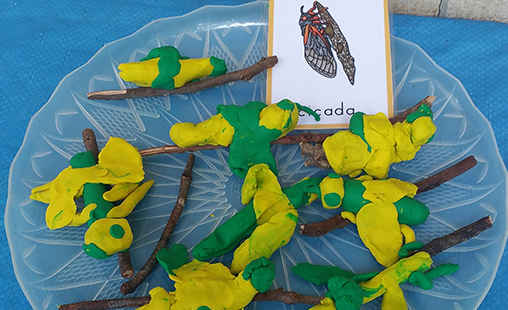 An outdoor art
class concluded this wonderful exploration of cicadas as the children collected a twig and made a cicada out of plasticine, remembering
to add three body parts (the head, thorax and abdomen), two large compound eyes, wings, and six legs.
An outdoor art
class concluded this wonderful exploration of cicadas as the children collected a twig and made a cicada out of plasticine, remembering
to add three body parts (the head, thorax and abdomen), two large compound eyes, wings, and six legs.
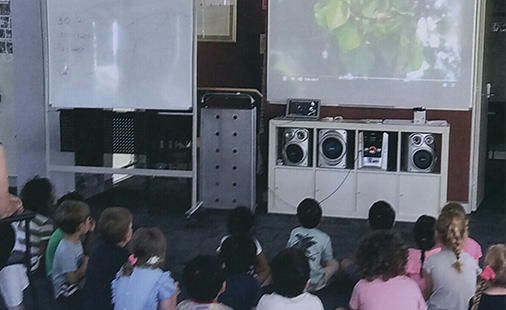 By being able
to observe, explore, discover and create, using real objects, the children are able to make sense of the world around them and
linking this to opportunities for deeper understanding of mathematics and language.
By being able
to observe, explore, discover and create, using real objects, the children are able to make sense of the world around them and
linking this to opportunities for deeper understanding of mathematics and language.
“So, from the age of three till six, being able to now tackle his environment deliberately and consciously, he begins a period of real constructiveness." (The Absorbent Mind, p. 152)
